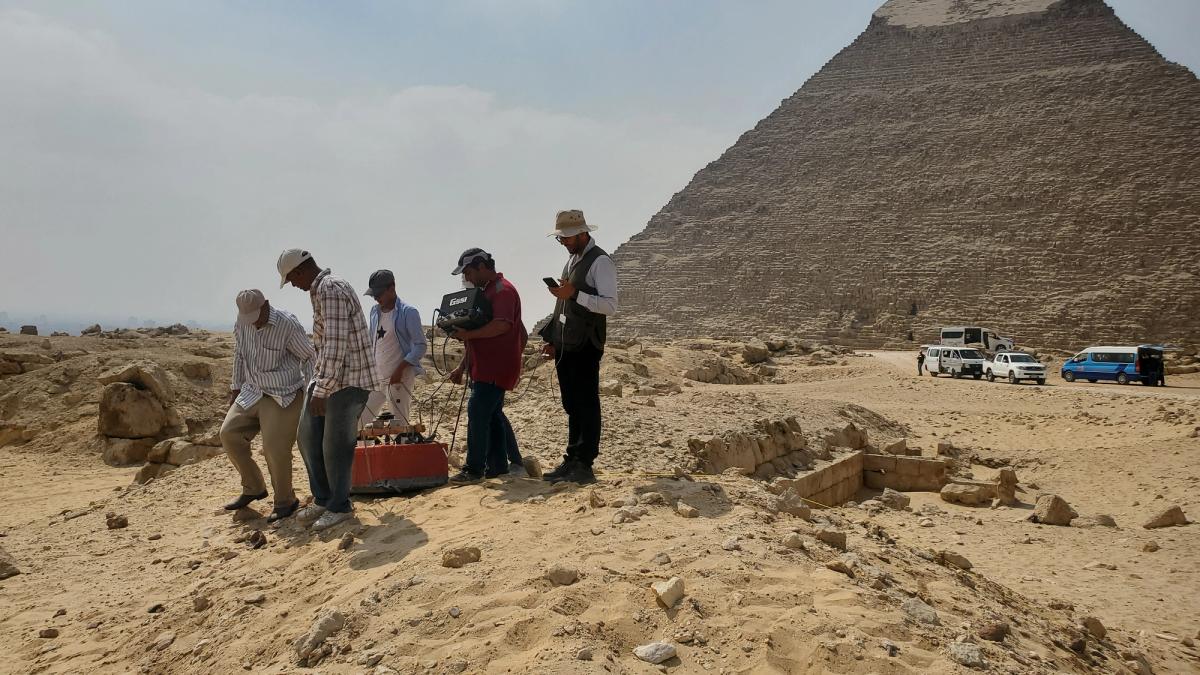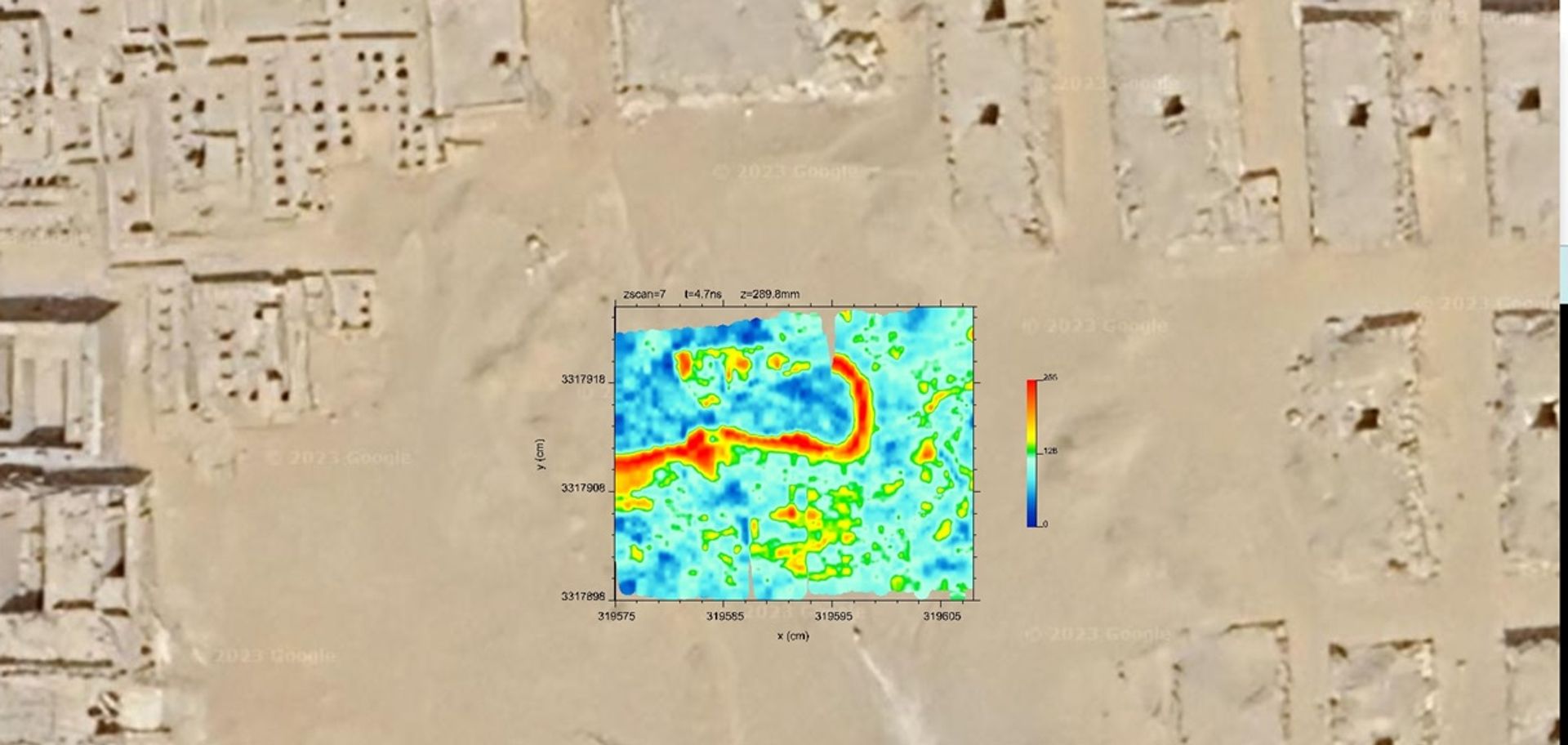Possible Ancient Egyptian structure identified beside the Giza pyramids
The discovery of the L-shaped object was made in an ancient Egyptian elite cemetery beside the Great Pyramid of Khufu

The research team conducting the ground-penetrating radar survey at Giza Image: © Higashi Nippon International University
Researchers working at Giza, Egypt, have identified an anomaly beneath the sand, which may be a previously unknown L-shaped structure. The discovery was made using ground-penetrating technology in an ancient Egyptian elite cemetery beside the Great Pyramid of Khufu.
"It could be a part of artificial objects, because the L-shape cannot be created in natural geological structures," says Motoyuki Sato of Tohoku University in Japan, a member of the joint Japanese-Egyptian research team that made the discovery. "We hoped to find something, but we did not expect to find it there."
The team identified the anomaly in an apparently empty "blank area" of Giza's Western Cemetery, where members of the royal family and high-level officials were buried in tombs called mastabas—rectangular funerary chapels, where ancient Egyptians made offerings to the dead, with shafts leading to underground burial chambers. Previously, there had been no significant discoveries in this large vacant space—around 80 by 110 metres in size—despite it being surrounded by ancient mastaba tombs and located beside the pyramids of kings Khufu and Khafre, built 4,500 years ago.

The L-shaped anomaly among the mastaba tombs at Giza Image: © Higashi Nippon International University
"There are no significant remains above ground in this area, but is there really nothing below the ground? No underground investigations have previously been carried out," the team write in the journal Archaeological Prospection.
To answer this question, the team conducted a geophysical survey from 2021 to 2023. They used ground-penetrating radar (GPR) and electrical resistivity tomography (ERT) to peer under the sand, because each technique provides a different insight into what lies beneath the ground's surface. Their initial survey revealed a large anomaly at the north end of the study area, and other anomalies elsewhere.
"We conclude from these results that the structure causing the anomalies could be vertical walls of limestone or shafts leading to a tomb structure," the team write. "However, a more detailed survey would be required in order to confirm this possibility."
To indicate the shape of the large anomaly, the team then made a further series of surveys using another type of ground-penetrating radar. Their results revealed an L-shaped structure, up to 2 metres beneath the ground and 10 by 15 metres in size. It is perhaps filled with sand, the team write, and may represent a void that was backfilled after construction. It appears to be connected to another structure below, up to 10 metres in depth and about 10 by 10 metres in size.
"We believe that the continuity of the shallow structure and the deep large structure is important. From the survey results, we cannot determine the material causing the anomaly, but it may be a large subsurface archaeological structure," the team write.
The higher structure may have served as an entrance to the one below, but little more can be said about the anomaly until it has been excavated by archaeologists.
"The results of our GPR and ERT survey point to the possibility of the presence of archaeological remains," the team write. "It is important that they must be promptly excavated to establish their purpose."
-- Sent from my Linux system.
No comments:
Post a Comment